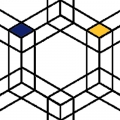Student Response To War
May 8, 1965
Student For Free Political Action [SFPA] sponsor UCSB’s first anti-war teach-in. The first part of the teach-in was the screening of two movies in South Hall about the Vietnam War [one produced by the US the second by the Viet Cong]. For the second component of the teach-in, 250 students gathered at Campbell Hall for a 3 speaker discussion about the war in Vietnam. Masamuri Kojima, Steve Kandel, and Henry Huglin were the speakers.
October 19, 1966
Joan Baez speaks in Professor David Arnold’s Sociology 128 class about the war in Vietnam, non-violence, and politics.
Fall 1967
Anti-Vietnam war activism constituted the majority of student political activity at UCSB. Small groups of students, among them the Student Peace Committee, organized a series of non-violent demonstrations that included picketing induction centers and the ROTC building, counseling student draft resisters, collecting signatures against the war, and sponsoring silent vigils and campus speakers. Anti-war activists, though few in numbers, succeeded in getting the Academic Senate to review the academic credibility of the ROTC program and motivated the Associated Student Council and select members of the faculty to take a public position against the war.
May 10, 1972
A rally of more than 7,000 people had emerged at the lagoon behind the UCen in response to action by Nixon-Kissenger first bombing of North Vietnam. After several speakers in the lawn, suggestions were made to continue this rally in to a march and sit-in on the Santa Barbara Airport runway.2,500 Santa Barbara community members occupied the Santa Barbara Airport resulting in the cancellation of all flights for the day. At 9:30 pm, the crowd was finally dispersed by police. Several shut-downs of Highway 101 take place over the next few days. 4,000 Santa Barbara community members marched through downtown Santa Barbara. The combined efforts of UCSB students and other protestors around the country mark a major intensification of the anti-war struggle during this period. The United States finally withdraws from Indochina completely in 1975.
1980
U.S. reinstates draft registration for men ages 18-25 in January, and hundreds of students immediately mobilize in resistance at UCSB. A UC-wide day of action features rallies of 2,500 at UC San Diego, 2,000 at UC Berkeley, and roughly 1,000 at UCSB.
1991
In the largest UCSB demonstrations since the Vietnam War era, separate anti-Persian Gulf War rallies draw 2,500 and 4,000 people, respectively. Following the January 17 rally the day after the war breaks out, 2,000 protestors march across campus and attempt to initiate a boycott of campus. Nearly 200 students are then arrested for occupying Chancellor Uehling’s office. “The Cheadle Hall 200” are put on trial and acquitted the following year.
2001
The image art "war is not the answer" was created by UCSB artist and student Candice Kim during the 2001U.S. invasion of Afghanistan and used the cover of a pamphlet published by A.S.I.A.N! which answers commonly asked questions about the "War on Terror". Such as "Isn't the war just?", "Why do they hate us?", "Why are we in Afghanistan/", etc.
March 6, 2003
Almost a thousand antiwar protesters march through UCSB as part of a national student walk-out to protest the invasion of Iraq. The size of the turnout pleasantly surprises the organizers and speakers. Sociology professor Dick Flacks, one of the speakers, says in a post-rally teach-in, “Until today, I was wondering, Several anti-war rallies have taken place since, but no sustained anti-war movement or organization has yet to form at UCSB to protest the Iraq War.
February 15, 2007
College and high school students across the nation walked out class Thursday in a national student strike against the Iraq war. A student, faculty, and staff strike in opposition to the war in Iraq turned into a protest march that led to the shutdown of Highway 217, the East Campus entrance to UCSB. Up to 3,000 students turned out for an anti-war rally at UC–Berkeley. And at least four hundred rallied at Columbia University in New York. More than a dozen other schools took part around the country.
Student protesters gathered at the bicycle entrance to UCSB in Isla Vista around 1pm this afternoon. The crowd began to grow as planned speakers spoke against the Iraqi war. After the speakers concluded, the crowd, which had grown to over 1000, began to march from the west side of campus to the HWY 217 entrance, eventually making their way onto the freeway before being stopped by police just before the Goleta Beach off-ramp. Two protesters were arrested and later released. After a standoff with police that lasted over an hour, the protesters marched to Cheadle Hall and continued to protest until dispersing around 5pm. Click here to watch a montage of the protest footage.
May 14th, 2010
Iraq Veterans Against the War [IVAW] spoke at the UCSB Student Resource Building about the U.S. military occupation of Iraq by the Bush and Obama administrations, the role of transnational corporations in Iraq, and the ongoing organizing by veterans and war-resisters to oppose the war and occupation. These young veterans made the choice to oppose war and occupation, often at great risk. Speakers include: Rick Reyes, Robin Long, Bryan Casler, Ryan Endicott. Brought to you by: UCSB Campus Left Co-Sponsored: Iraq Veterans Against the War (IVAW), Diversity of Thought Club, Students for Justice in Palestine (SJP), and Students for a Voluntary Society
January 31, 2011
Outside of Storke Tower members of the Human Rights Group and Associated Students Human Rights Board protested Guantanamo Bay and the National Defense Authorization Act. Students wore orange jumpsuits, similar to those issued at Guantanamo Bay to catch other’s attention.

Discussion of "Student Response To War"
Add your voice to this discussion.
Checking your signed in status ...